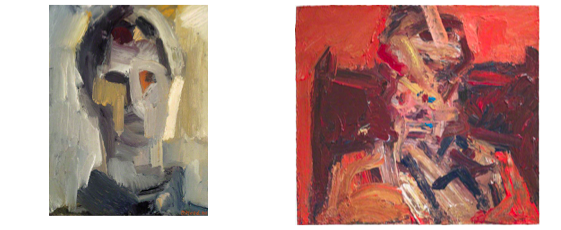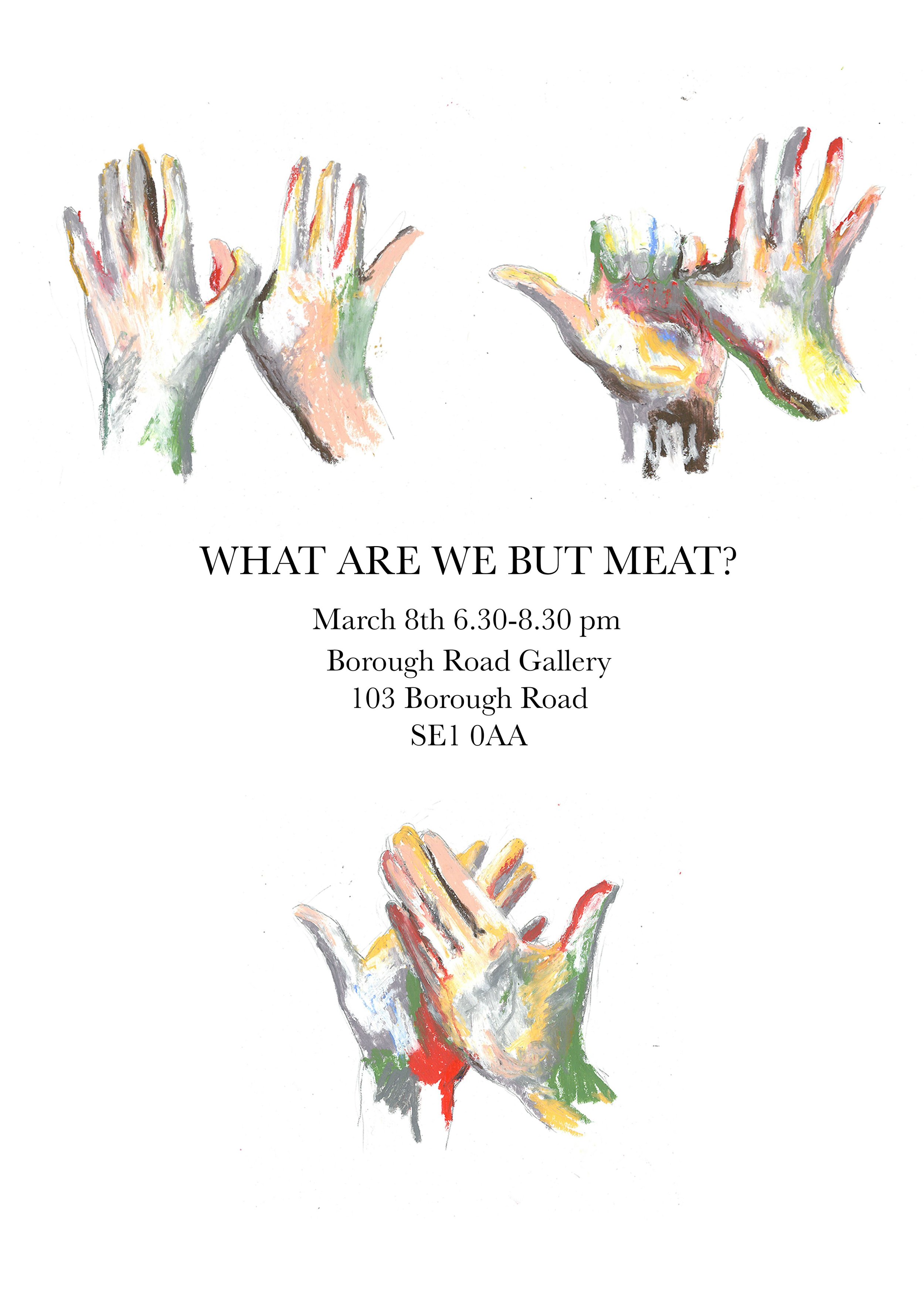Tate Britain’s 2018 ‘All Too Human’ exhibition, which surveys British life painting from the early 20th century to the present, brings together two unlikely female artists. Dorothy Mead and Jenny Saville, despite their stylistic disparities, together represent a minority viewpoint within a genre that has traditionally been the stronghold of men, particularly when approaching the female nude. The male gaze has delineated and defined women’s bodies throughout art history, but this process is disrupted and reimagined by the entrance of social outsiders into the art form. Judging by the work selected for the exhibition, the male artist’s struggle for enlightenment will continue to eclipse the contributions made by women to visual culture. Rather than dwell on Tate’s selection of works here, I will turn to two other paintings executed by these women that bring their practice into dialogue, involving them in a counter-discourse about the human form in art.
In Dorothy Mead’s oil painting titled Transvestite, a pale figure stands luminescent against a wash of deep blue and red, posed in the heroic silhouette of a classical sculpture. Despite their stance, the marbled subject is a site of ambiguity, where the rounded fullness of the foreground leg and the distortion that blurs the body coexist within the same figure. What is flesh and what is fabric? Is the human form cloaked in crisscrossing layers of paint, or subtly revealed in the overlapping tones? Limbs are unhinged by the hint of drapery which falls from the figure’s shoulder, and fixed-point perspective becomes precarious as shadows and tones appear anchored to their own flatness rather than the curvature of the body. Leaning back slightly, the model in the painting exudes a gentle ease. The limbs lack the rigid fixity of those in Saville’s Passage (2004), instead of resting softly and naturally in place like the folds of a curtain. Contrasting with the resultant ethereality of Mead’s figure, which might be swept up and away in the flow of a brushstroke, the effect of Saville’s painting feels more akin to looking into an airless vacuum, or a closely controlled laboratory interior.
Saville’s giant figure is posed dramatically, their genitalia pushed towards the viewer and their legs spread to extend out beyond the picture plane. Arms and legs are amputated by the composition, funnelling the eye towards the torso which dominates the central third of the painting. Unlike in Mead’s work, the model’s transsexuality, rather than being announced by the painting’s title, is distinct and overt. The title is suggestive of movement, transition, and change, or alternatively might infer a narrowness and hardship which one must move through to reach a certain destination. While Saville’s enigmatic title demands metaphorical investigation beyond the subject’s physical presence, the very surface of Mead’s painting invites an interrogation of every out of focus brushstroke.
Despite a common preference for using broad, rectangular strokes to carve out their sitters’ bodies, the two artists construct the flesh of their subjects markedly differently. In the tradition of Euan Uglow, Saville’s approach is intently and intensely measured. A mathematical precision governs the distribution of brushstrokes which themselves hold a digital clarity, owing perhaps to the artist having worked from a series of photographs rather than directly from a model. Dorothy Mead would have instead worked from life, following the standard set by David Bomberg’s classes at The Borough Polytechnic which ran from the 1940s into the 1950s. Bomberg encouraged students to renounce the traditional, formulaic techniques of painting from life in favour of a more spirited engagement with the physical subject before them, a message Mead absorbed and adapted throughout her oeuvre. Bomberg also prioritised engagement with the flow of natural forms, departing from the graphic, angular style he had employed earlier in the 20th century to depict war and its machinery. Many of Mead’s paintings, such as her Reclining Nude in acrylic (c.1950), possess an earth-like quality, their bodies resembling sun-kissed hills receding into the distance, becoming interchangeable with rolling landscapes in both colour and composition. The women in her paintings are multi-layered, imposing and potentially hostile landscapes rather than simply objects of desire. For Transvestite, Mead erected the figure at the centre of the canvas, standing boldly against their nondescript environment, a bright landmark pushing forwards instead of receding backwards. The figure derives its strength from this high contrast, both within its immediate environment and in relation to Mead’s other life paintings.
However, this is not to say that a geometrically astute style of painting cannot render an expressive and multidimensional subject. The precision of a measured, scientific observation and documentation is arguably sensitive to the contemporary treatment of the transsexual body. Access to medical intervention to reconcile body with mind via Sex Reassignment Surgery, breast augmentation and Hormone Therapy only arose in the latter half of the 20th century and were not accessible at the time Mead was painting. In conjunction, the two paintings chart the Trans body coming into focus as a visible and rational subject within modern society.
The ‘passage’ Saville refers to lies between and connects visual markers of biological sex, from the penis up towards the figure’s made-up face and silicone breasts. In an interview with Simon Schama Saville described her desire to create a “contemporary architecture of the body” and “a sort of gender landscape” which would not have been possible 30 or 40 years ago. Following her rational construction, the viewer traverses the transvestite’s newly realised body in a logical manner which functions to normalise the transsexual subject. This technique empowers the sitter with whom Saville worked, as the viewer is forced to follow the direction dictated by their enormous painted body. Marks are used by Saville to channel the gaze across the body and in doing so she knits together disparate elements on the large canvas. The longer one looks at the figure’s body, the more it makes sense as a cohesive whole.
The sheer scale of Passage communicates an ideal of larger than life pride in transsexual physical identity which is much more self-evident than the murkier display of form in Mead’s painting. However, the transvestite is described by Mead in terms of their shifting presence within the space, rather than through physiological features, arguably a representation more aligned with modern attitudes towards the mutable nature of sex and gender. While Saville’s work centres visually on a brave display of biological sex through a theatrical confrontation, Mead’s rendering is more concerned with the porous boundary between interior and exterior as expressed through the uncertain physical condition of the transvestite at the time she was painting. Paint is used in different ways by the artists to empathise with the physiological and psychological experience of transsexuality, foregrounding its presence in contexts which continue to obscure and ostracize the Trans subject themselves. Both paintings relate to the burgeoning discourse around gender identity that has evolved over the past few decades by introducing the transsexual anatomy into a common language of the human body, and at the same time questioning the inviolability of the life painting tradition.









